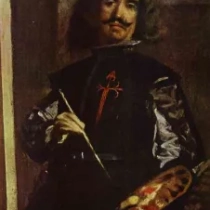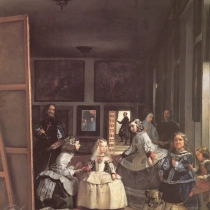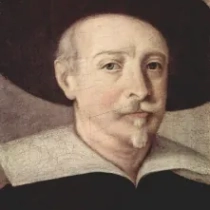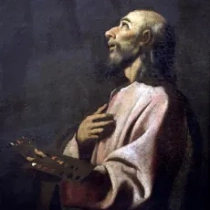 1599 - 1660
baroque
1599 - 1660
baroque
Description Diego Rodriguez de Silva y Velazquez
Diego Rodríguez de Silva y Velázquez, born in 1599, emerged as the quintessential painter of the Spanish Golden Age, leaving an indelible mark on the annals of art. Hailing from Seville, Velázquez's journey was a pilgrimage from the vibrant streets of his birthplace to the grandeur of the Spanish court.
Apprenticed to Francisco Pacheco, Velázquez quickly transcended the confines of provincial art. His early works, like "Water Carrier of Seville," showcased an intuitive understanding of light and a keen eye for the human form. Velázquez's relentless pursuit of artistic excellence prompted his move to Madrid, where he would become the court painter to King Philip IV.
Velázquez's tenure at the Spanish court was a kaleidoscope of artistic triumphs. His ability to capture the essence of his subjects, whether in intimate portraits or grand historical scenes, reflected a deep empathy. The iconic "Las Meninas" stands as a testament to his innovative approach, with the artist himself appearing in the composition, blurring the lines between reality and art.
The painter's interactions with the Habsburg court elite afforded him insights into the power dynamics of the time. Velázquez's portraits, such as "Portrait of Pope Innocent X," are not just visual documents but psychological studies that peer into the complexities of the human soul.
Velázquez's visit to Italy, where he encountered works by Titian and other masters, catalyzed a shift in his style. The influence of Venetian color palettes and techniques fused with his Spanish roots, resulting in masterpieces like "The Surrender of Breda," where war and humanity coexist in a poignant dance.
While Velázquez's oeuvre is synonymous with courtly grandeur, he remained grounded in his fascination with common life. Paintings like "Old Woman Cooking Eggs" reveal his penchant for elevating the ordinary into timeless reflections on the human condition.
Velázquez's death in 1660 marked the end of a remarkable chapter in art. His legacy reverberates through the ages, influencing painters from Manet to Picasso. The enigmatic gaze in his portraits, the play of light in his compositions, and his ability to transcend the boundaries of genre ensure that Velázquez remains an eternal luminary, a conjurer of visual poetry that transcends the limits of time and culture.
Gallery
Paintings Diego Rodriguez de Silva y Velazquez
Quotes
I would rather be the first painter of common things than second in higher art.
F.A.Q Section
"Las Meninas" (1656): A masterpiece that depicts the Infanta Margarita surrounded by her attendants, offering a unique and enigmatic perspective.
"The Surrender of Breda" (1634–1635): A historical painting depicting the surrender of the Dutch city of Breda during the Eighty Years' War.












No Comments Yet...